When is the last time you ate a potato? I bet it was somewhat recently. I have to admit that, even though it’s unusual for me, I had a handful of potato chips this afternoon! Not the healthiest option, but sometimes that’s how life goes. But, the real question is, have you ever had a homegrown potato? We all know that homegrown tomatoes and peppers are 100 times better than store bought, but would you believe me when I say that homegrown potatoes are the same way? It seems hard to believe, but it really is true!
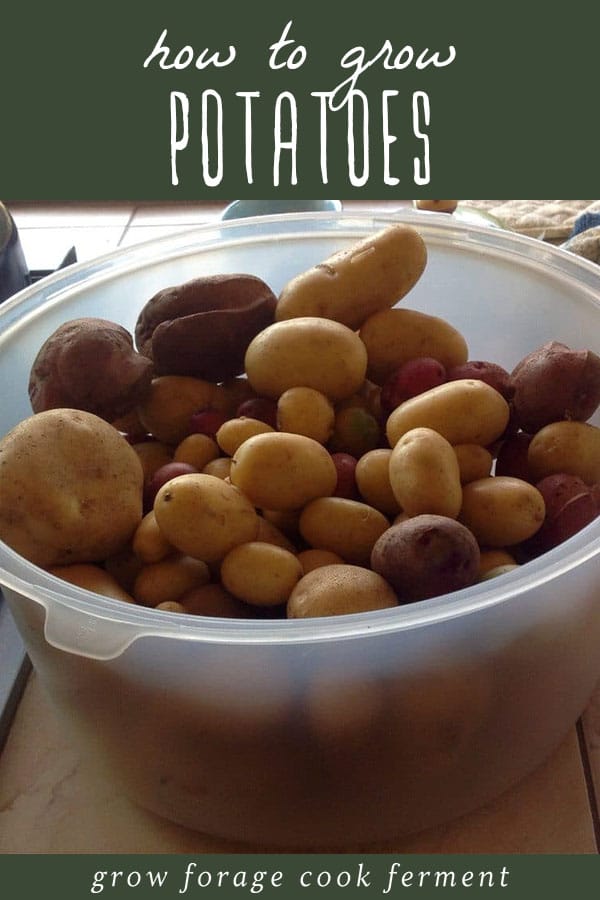 I’m going to show you how to grow potatoes, and the best part is that it couldn’t be easier! All you need are potatoes that have a few sprouting eyes on them. A good rule of thumb for North America is to plant them around St. Patrick’s Day, but obviously this is highly variable. Earlier in the southern part of the country and later in the northern part, but do remember that they prefer cooler temperatures regardless.
I’m going to show you how to grow potatoes, and the best part is that it couldn’t be easier! All you need are potatoes that have a few sprouting eyes on them. A good rule of thumb for North America is to plant them around St. Patrick’s Day, but obviously this is highly variable. Earlier in the southern part of the country and later in the northern part, but do remember that they prefer cooler temperatures regardless.
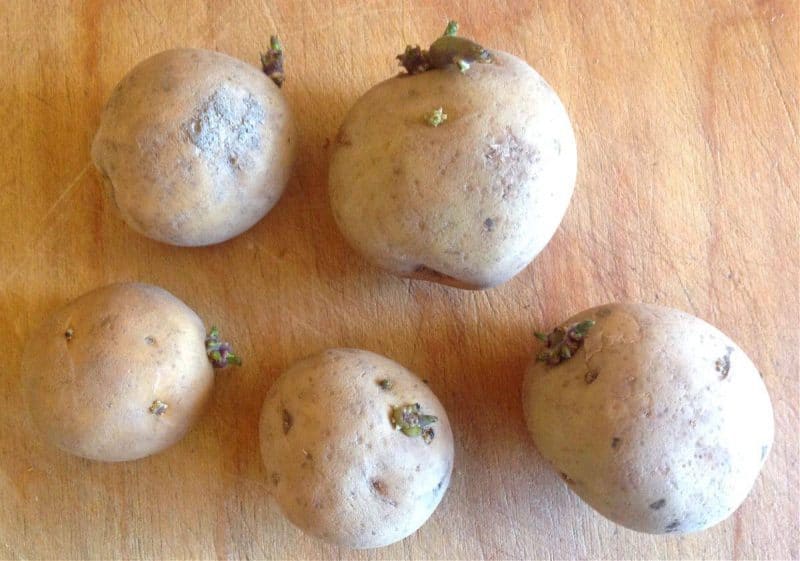
How to Grow Potatoes
Cut each sprouting potato into chunks with at least 2 or 3 eyes on them. Set them in a windowsill to dry out for a couple of days before planting.
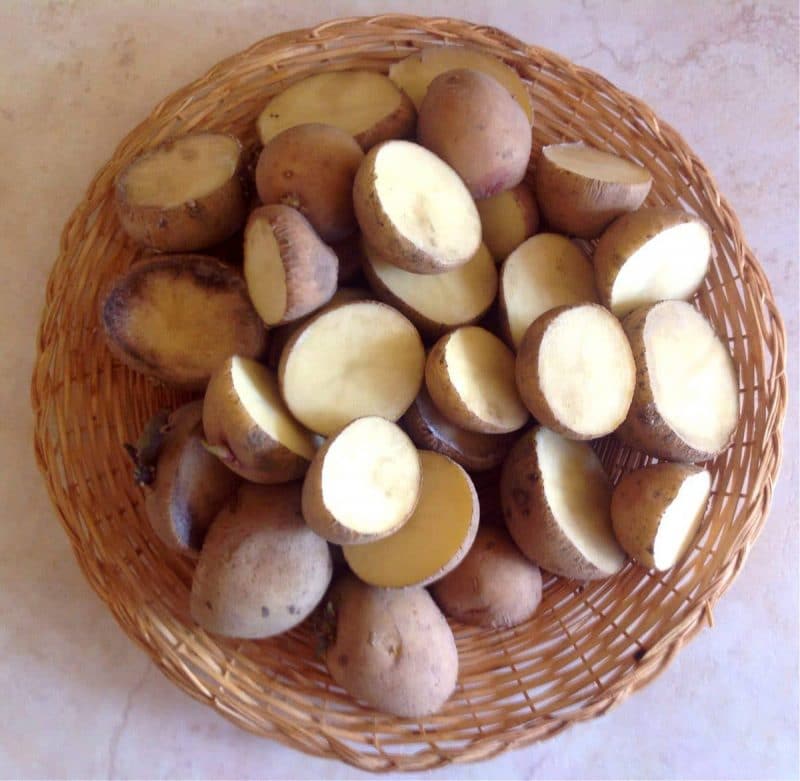
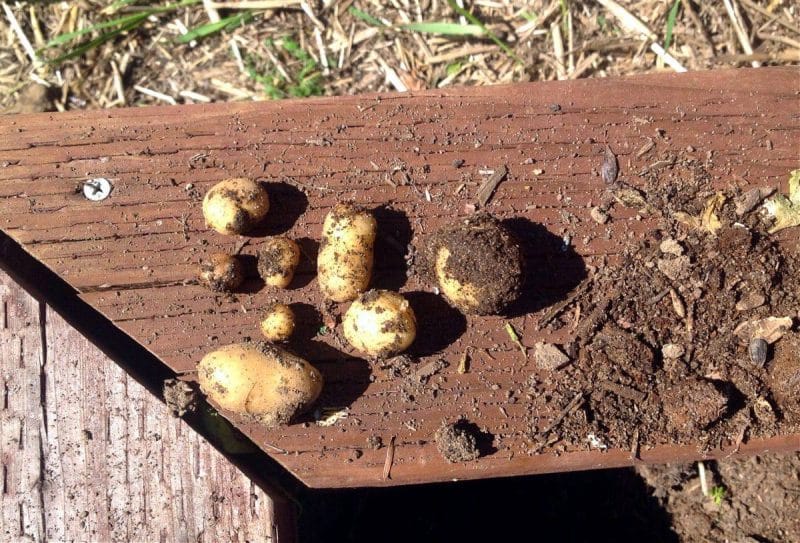
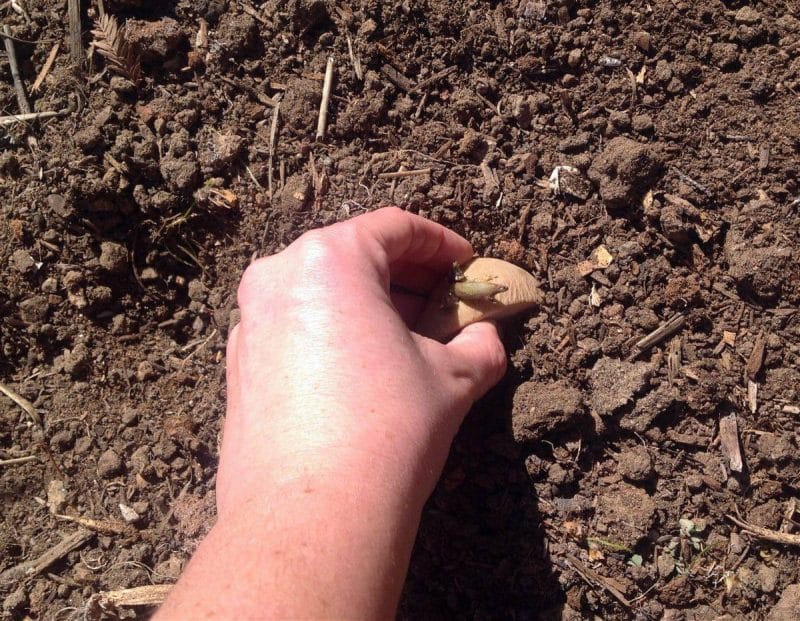
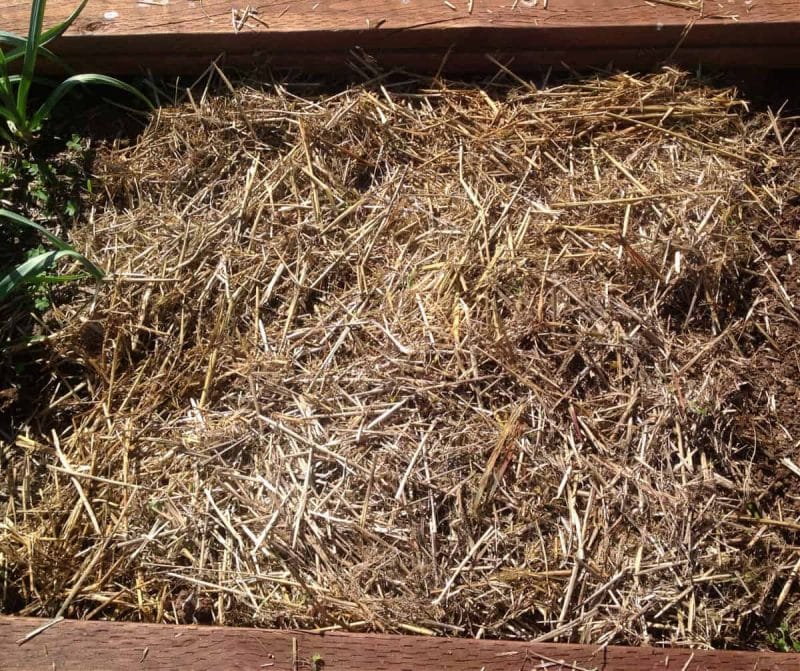
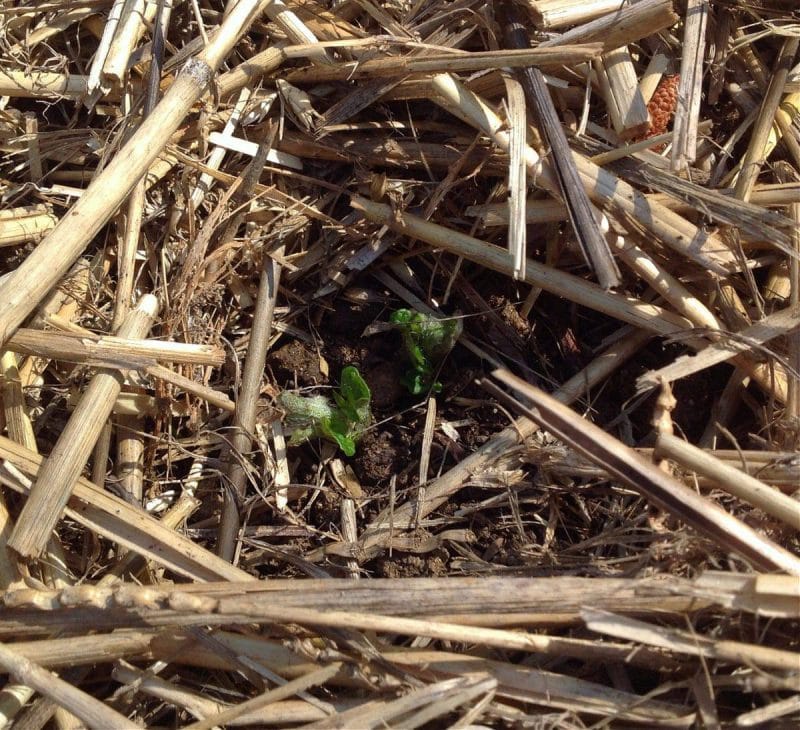
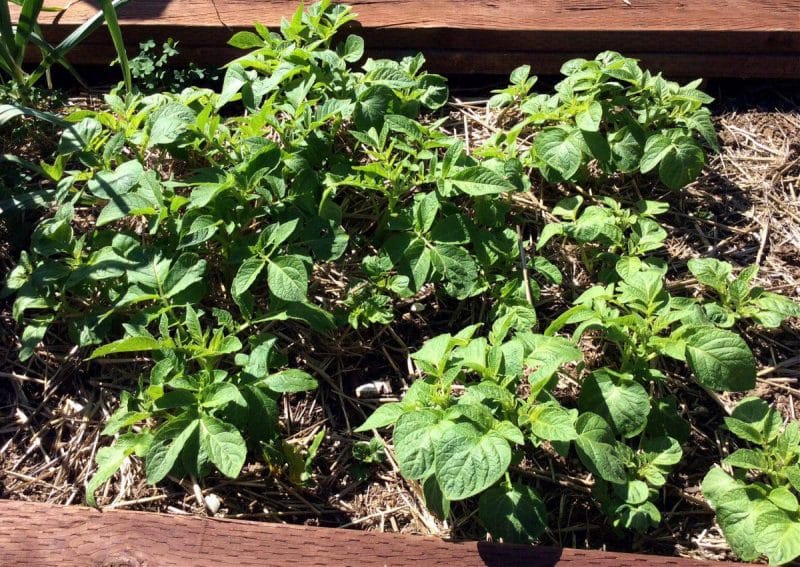
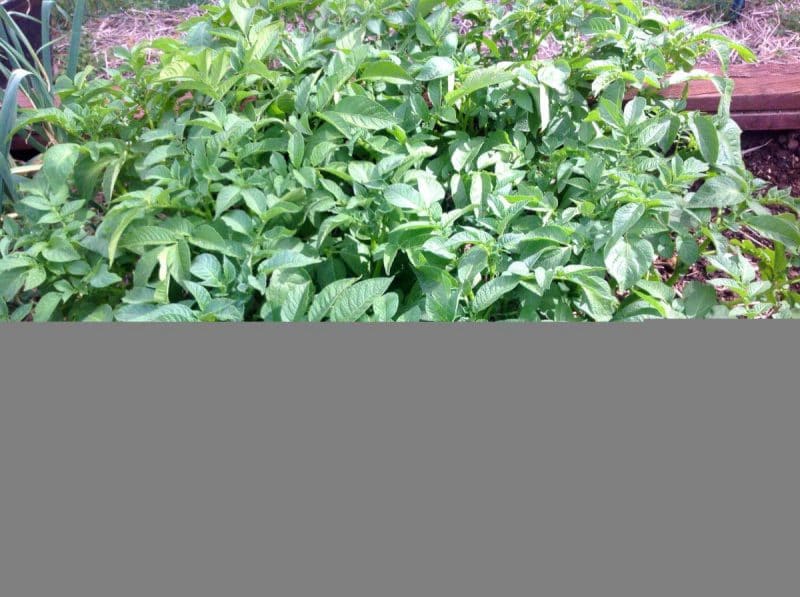
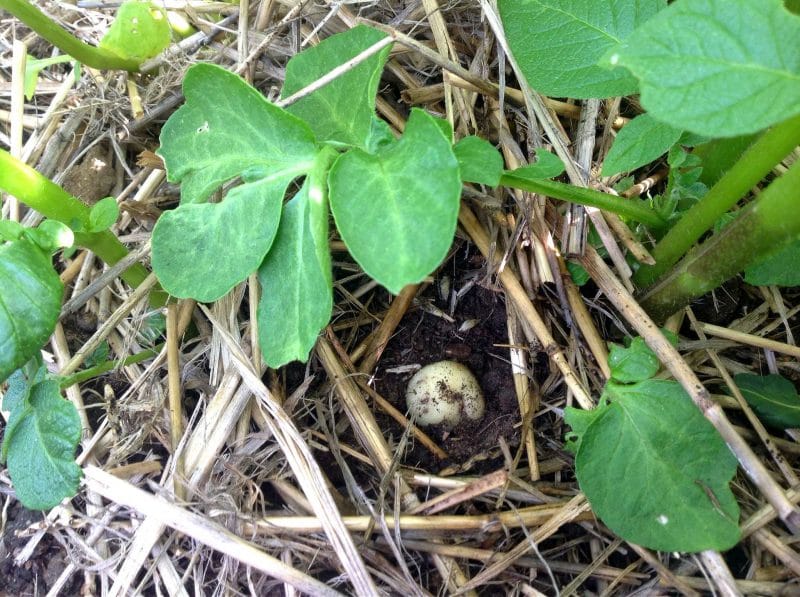
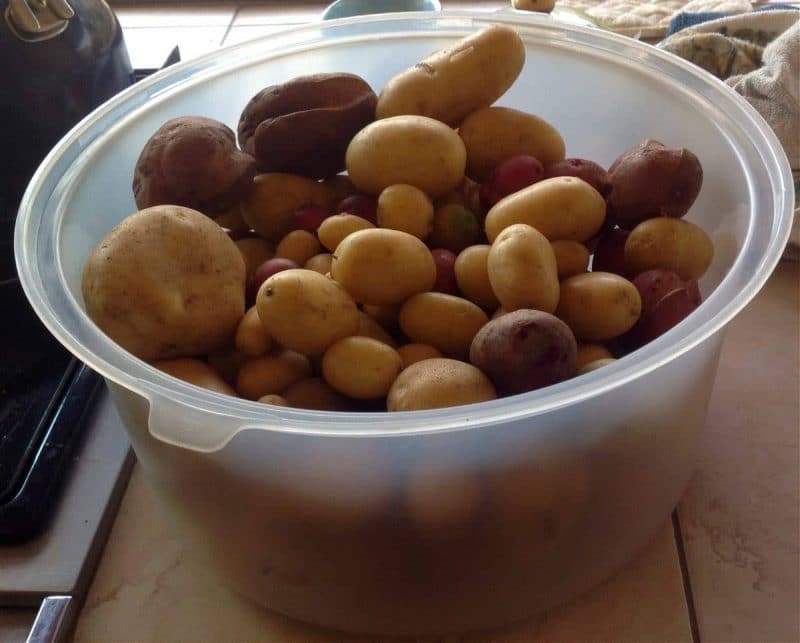
Put a spud in the ground, you won’t regret it! What else do you have to lose?

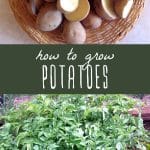
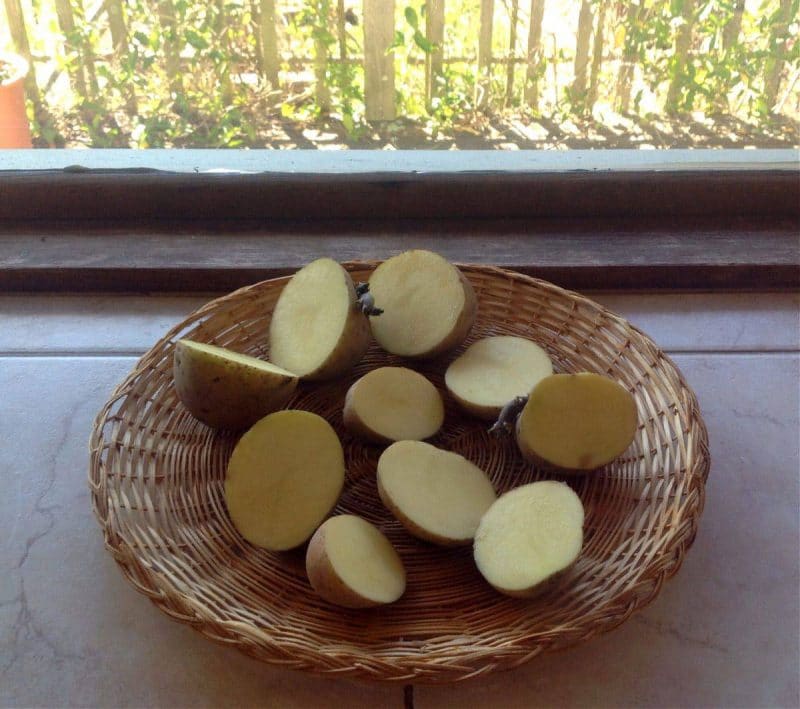

I’ve planted potatoes for the first time this year. They seem to be growing fine. If I get lots how do I store them if I don’t have a root cellar or cold storage room
You could try canning or dehydrating them.
Help! I know there is a difference between hay and straw. The stores locally seem to sell something labeled seeding straw. Your article said to use hay. I am such a novice and don’t want to purchase the wrong thing. Please tell me, what shall I buy – hay or straw?
We used hay.
As a urban-girl-moved-to-the-country I made an assumption hay was straw. Hay is green, full of thin solid strands of grasses and flowers and is eaten by livestock. Straw is yellow, hollow stems, and I believe the leftover chaff of wheat. Straw is what you want for bedding but try to find a local farmer or market that doesn’t spray with weed killer or fungicide. Sprayed straw bought at hardware chain stores can be sprayed and will decimate your plants.
How do I get rid of scab?
I’m going to be planting in a huge pot this year I can’t wait to see how it works
Thanks for the potato reminder! Fun pictures! It’s 80 degrees today…probably should wait!
You have some good timing. My batch of seed potatoes is set to arrive this week, and I’ll be putting them in the ground over the weekend!
We made the blog news!
You have famous potatoes :)
I grew potatoes – and sweet potatoes! – last year, and enjoyed both very much. I notice that you didn’t cover the green sprouts; I have read that you continue to cover up sprouts when they pop up for regular potatoes. I didn’t last year, but I’m thinking of covering up the growing sprouts this year to see if that helps create a more bountiful harvest. Sweet potatoes are lovely vines (and incredibly buttery-delicious fresh from the garden, too).
I had some Rose Finn potatoes left in my pantry from last year; I just put them in the dirt a week ago, because they had little sprout-tentacles coming off them! However, I DIDN’T cut them in half and leave them to dry. Do you think that will affect anything?
I put fairly thick layer of hay over the sprouts so I don’t really find it necessary to add more. I’ve always had a great potato harvest this way! Cutting the potatoes spreads the plants out a little more and leaving them out to dry before planting helps to prevent them from disease. I don’t think you have to worry, though, I’m sure you’ll get potatoes regardless!